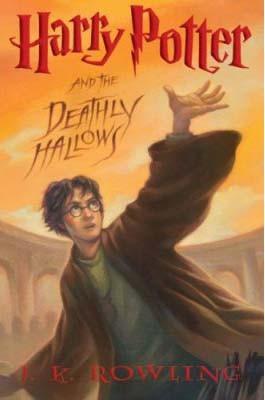Rowling spreads magic of reading

Everyone, it seems, is mad about Harry.
Millions of copies of the Harry Potter books have been sold, and millions more are expected to sell when the seventh and final chapter in the young wizard’s saga, “Harry Potter and the Deathly Hallows,” hits bookstores and mailboxes starting July 21.
But has the J.K. Rowling series had a positive, long-lasting impact on the reading habits of children?
It’s generally believed that Rowling’s epic tale has created a large group of readers among the younger set. According to a survey conducted last year by Scholastic, the publisher of the Potter books in the United States, more than 50 percent of 5-to-17-year-olds claimed they didn’t read books for fun before reading Harry’s exploits.
“It has certainly generated interest in reading the Harry Potter books,” says Jan Passo, collection development director of the Las Vegas-Clark County Library District.
As far as single titles go, however, “it is on a continual ‘be sure we have enough copies on the shelf’ list,” Passo says. “There are many other books like that. I can’t say it’s because of the ‘Harry Potter’ titles.”
The library district has ordered 300 hardcover copies of “Deathly Hallows” and another 200 CD audio books of the title. That’s a lot, but not as many as for the previous book, “Harry Potter and the Half-Blood Prince” — 400 copies were purchased. The number is down because “people started buying copies of their own” so the demand isn’t as high at the library.
For those who have put copies on hold at the libraries, they can be picked up the day of its release. Meanwhile, three copies of the book will be available on a nonhold basis at urban libraries.
Readers began putting library copies on hold as early as February.
To date, more than 325 million copies of the books have been sold.
At the NeverEnding Story Children’s Bookshoppe, 68 books have been pre-sold, says Mika Gray.
A fan of the Potter series, Gray thinks the books have changed how kids read. “They have made readers of children, even with all the video games and iPods that are competing for the attention of younger people. People are growing with the books.”
The Potter phenomenon caught everyone by surprise when the first book was released in 1997. Even Passo, who read the book and liked it. “I thought, ‘That’s a good book,’ but I never saw it coming. It did take off a little bit faster in England than the U.S.”
She is most struck by the intense interest in books that are anything but short, quick reads.
“Can you imagine young children reading books 700 pages long, in an age when we have videos and TV? When children are doing research for book reports they’ll look at the size of the book. With the Potter books it’s most remarkable to me the number of pages they’re willing to invest their time in.”
“Deathly Hallows” is 784 pages and is No. 1 in sales rank on Amazon.com and Barnesandnoble.com.
But what’s the next big seller after Potter mania dies down?
“That’s what we’re all waiting to see,” Passo says. “There may be some interest in the Philip Pullman books, ‘His Dark Materials,’ when the movie of ‘The Golden Compass’ comes out. The movie may launch it into the realm of Harry Potter.”
In the realm of fantasy books, Gray thinks Jenny Nimmo’s “Charlie Bone” series has a chance of breaking out big time, as well as Brandon Mull’s “Fablehaven” series and Dave Barry and Ridley Pearson’s “Peter Pan” series.